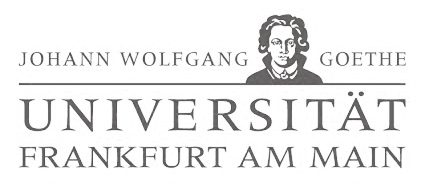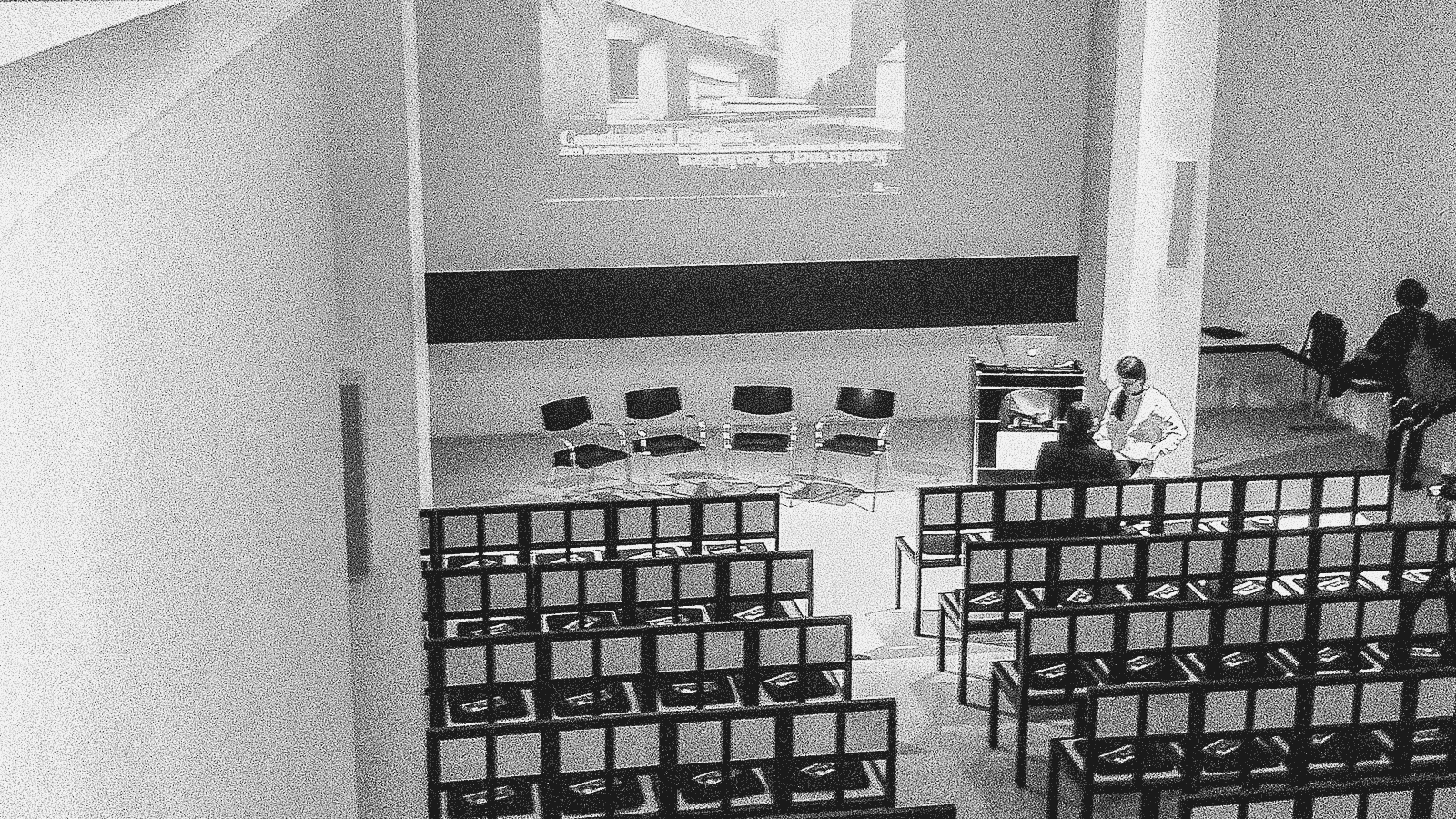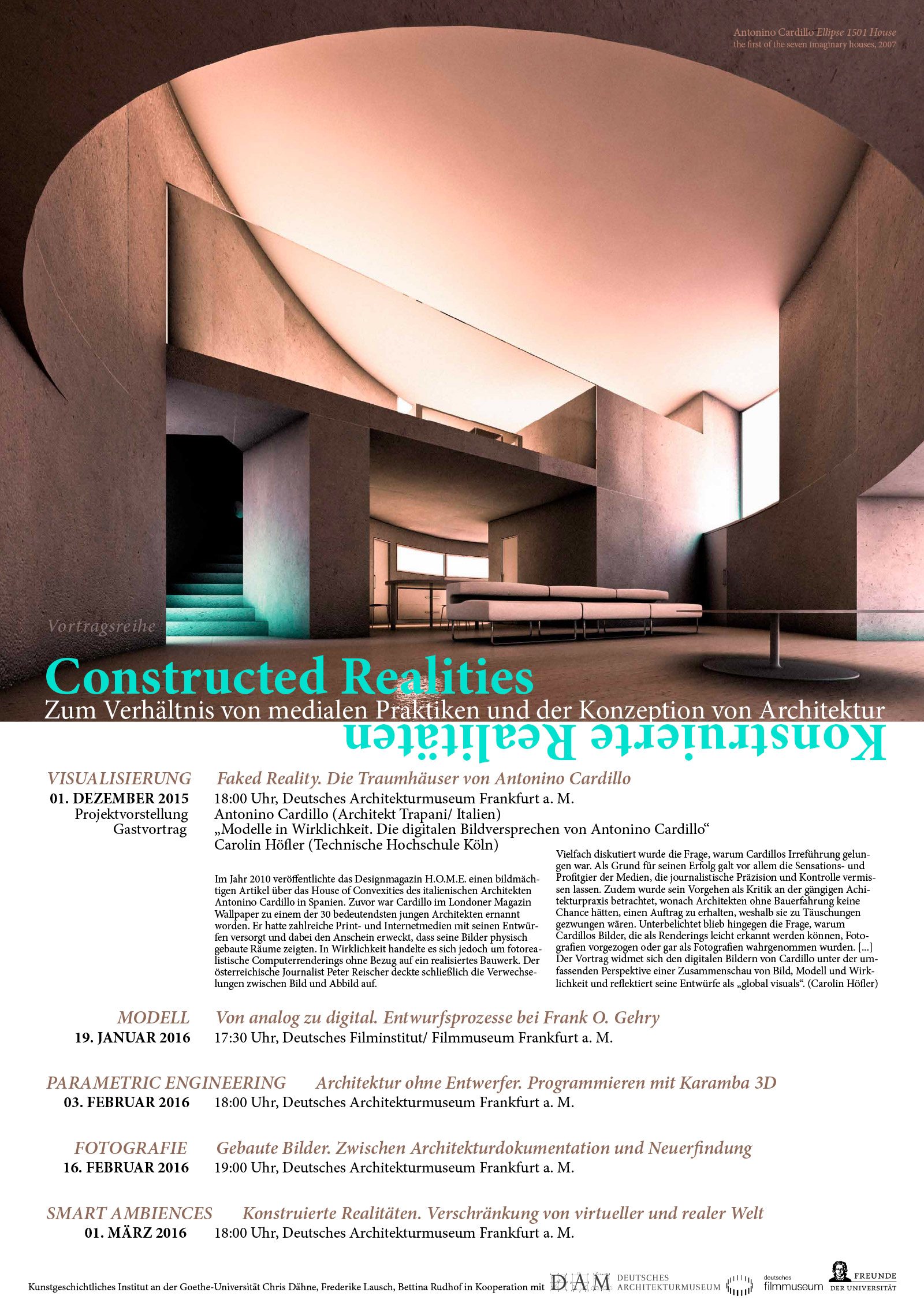
Lecture
Antonino Cardillo
What do we talk about when we talk about reality? And what do we talk about when we talk about fake? During my university studies I received a modernist education. The history books taught what was right and what was wrong. I was mainly trained with the assumption of the primacy of the architecture of the United States of America. Especially Frank Lloyd Wright, who I loved and European migrants, especially Mies van der Rohe and Walter Gropius. I was thus instructed to the idea that Italian architecture built between the two wars had been a fake in history. A few years later, during the years I lived in Rome, I began to feel an inner conflict. I often realised that the things I studied didn’t match what my eyes saw. However, it was a long and difficult process that led me to question the certainty of the correctness of modern Western architecture. So, I slowly realised that my training could have been the result of manipulation.
I start with this first topic of the rewriting of history because I would like to invite you to reflect so that, before discussing on the media and falsified realities, perhaps we should discuss history, the origin of all manipulations. What we know about the past is rendered by historians. That’s not what really happened. It’s not the truth. Every historian knows well about the relativity of sources. But when you are young and approaching a book it is difficult to prevent that reading from become your idea of reality.
So, again, what do we talk about when we talk about reality? If reality is a representation, how is it possible to talk about it as a physical phenomenon? Will the reality of a person born in Frankfurt am Main be the same as someone else born in India or Syria? I believe that this subject is especially important today, because of the dramatic political situation of our present. What we think we know about this alleged reality very often turns out to be only a consequence of the phenomenon of journalism. Since we cannot physically experience the world as a whole, despite the fact that we modern Westerners are still being raised under this false expectation, we end up believing an idea of reality derived from history books and journalism. So, what we are used to defining reality, is not reality itself, but a representation of information that we have acquired from surrogate experiences: books, newspapers, videos and websites. A confused and fragmented representation of the world that is part of an informational strategy of the dominant power.
Today, I find it difficult to talk about my act of the Seven Houses for No One. Maybe it has to do with my personality but, to this day, I don’t have a clear position on what I did. I thought a lot about what I would say in this conference and I would like to say now that I see my act of the Seven Houses for No One as a bad answer to a good question: how is it possible to influence the closed system of contemporary journalism so strongly linked to corporate architecture studies, which in fact are not prominent for their cultural values but rather for their business achievements? Living in such a controversial present, I was busy solving a dilemma. I needed to communicate my ideas without being part of an academic society or having enough money to self-commission architectural works. So, when at an early stage I declared to journalists that my works represented by computer-generated images had not been built, I was surprised to learn that those journalists were not interested in my ideas but only in a physically constructed reality.
The second topic I would like to discuss is the concept of professionalism. In this modern era we live in, the architect is considered a professional. But I’ve always seen myself more as a story writer than a practising technician. I am an architect not to produce a commercial exploitation of architecture but to write stories. I’ve always been in love with the architecture of the past. The city where I was born, Trapani, is an ancient city. My imagination was influenced by Greek temples and other antiquities. Unknowingly, I suffered an unconscious aesthetic education, which slowly let an attitude emerge: that of seeing architecture as a consequence of imagination. And although at the University I received a modernist education, after my studies, when I started creating architecture, I experienced today’s problem of finding clients who could adapt to this idea of an architecture of imagination. I was so surprised to find that today’s clients see architecture more as a way to solve their practical problems and weren’t very interested in my stories. So I started designing the Imagined Houses. The media strategy, after, ended up becoming part of a work of planning since any writer, after all, has as his first desire to tell his novel to the world.
The third topic of my speech is about the integrity of the process of creating the architectural work. Nowadays, conventional architecture firms commission the production of computer-generate images of their own projects produced by third-party companies. Or, in the event that the aforementioned rendering images are produced within your own studio, they are not mostly created by the main architects. So, through that act of creating computer images of my own projects, I tried to reintegrate this artificial division of roles, the so-called specialisation known as a consequence of this industrial era that we still live in, which interrupted the organic process of every authentic creation. I built those images like a craftsman, trying to research that signifier who seems inevitably lost in the fragmented process of the architecture of the present.
Today, however, I recognise that the signifier of those Imagined Houses was rather confusing. Now I have a different idea of architecture. However, the production of those houses taught me to bridge the gap between the idea and its representation. A few years later, when I physically built the House of Dust in Rome, I had already treasured that experience. The production process of the ‘Seven Houses for No One’ had thus taught me to free the representation of the project from that documentary approach typical of today’s commercial photography, rediscovering the mitopoietic quality of the representation of the architecture of the past.
To conclude this speech, I would like to link the first topic of history and the latter of myth. My architectural images are an attempt to create a mythology that evoke an imaginary. I have never considered that of faked reality as a real topic of discussion. Pretending about the truth of a story is the subject of historians or journalists. However, I find myths, fairy tales and legends to be more honest. They contain an anthropological quality that settles centuries of meanings. They are like stories deprived of information, revealing a deeper signifier. This is the argument forgotten by today’s architecture. Cancelled by that all-commercial obsession with pleasing customers. Day after day, we experience the paradox of a society content to define places devoid of ideals and feelings. Architecture thus no longer creates sacred spaces or even buildings of civilisation. On the contrary, architects invent architectures for banks. However, I would like to suggest that we should risk more by reintroducing that literary quality typical of the architecture of the past: any reality is written on the sand, an illusion that, however, neutralises the lives of millions of people.

Faked Reality. Antonino Cardillo’s dream houses, Deutsche Architekturmuseum, Frankfurt am Main.
